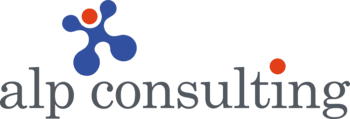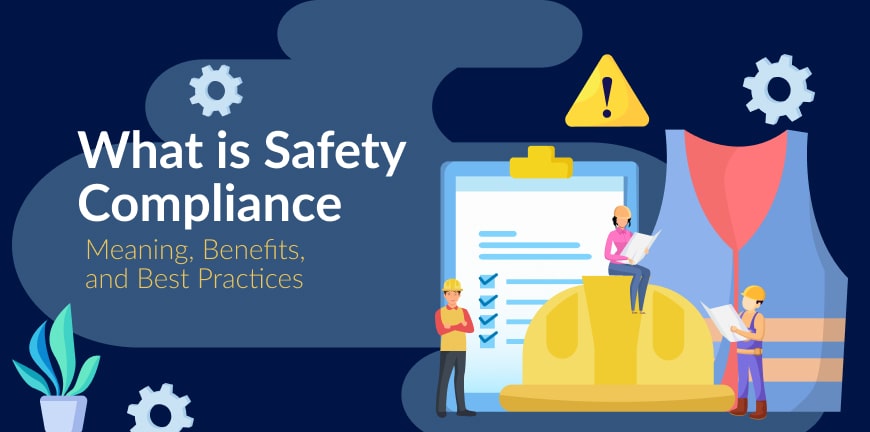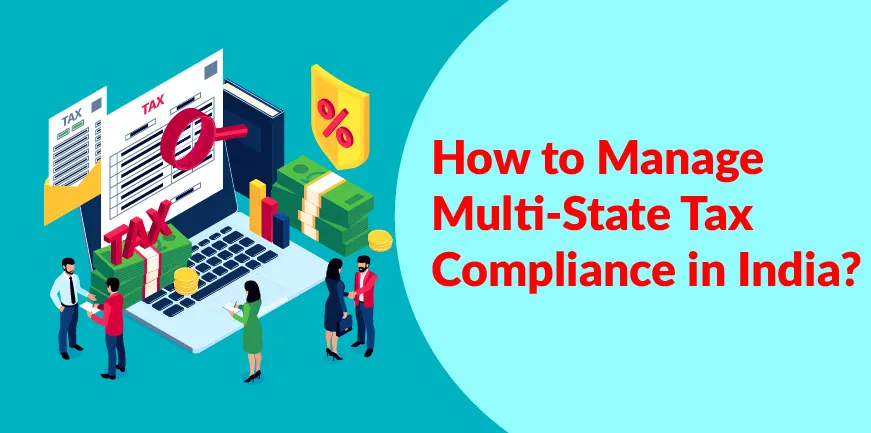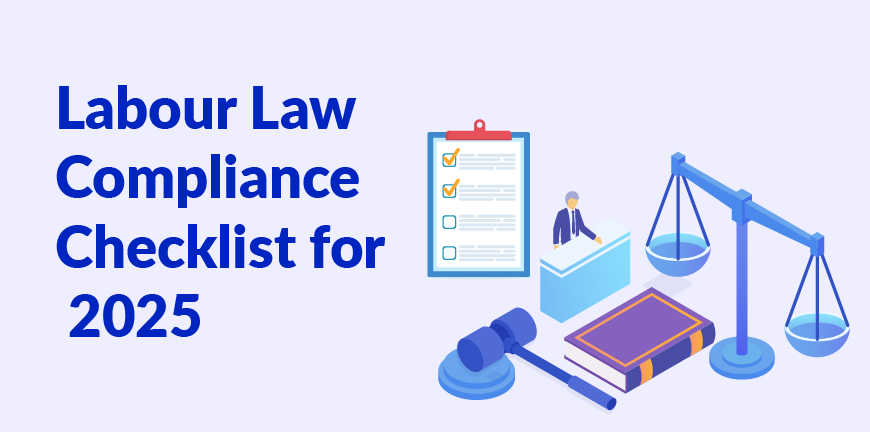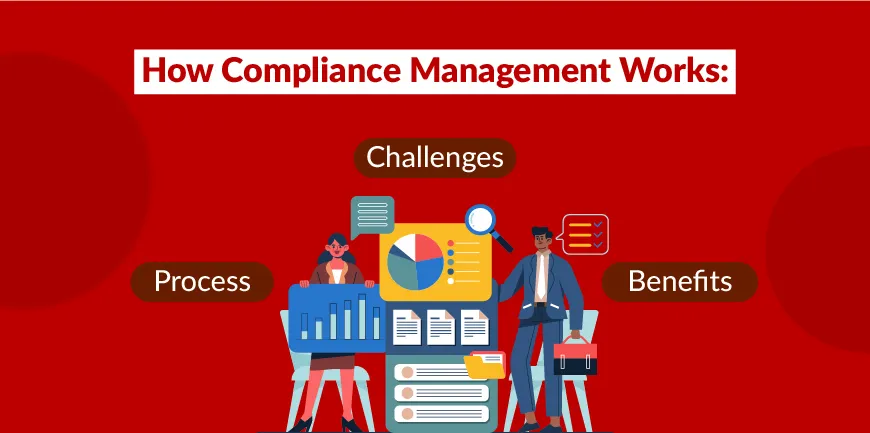
Skills-based Hiring Gain Momentum: Reshaping Recruitment Strategies
21/04/2025
Understanding the Role of AI in Staffing – Benefits, Challenges, Best Practices
21/04/2025- What is Safety Compliance?
- What is the Importance of Safety Compliance?
- What Are the Benefits of Safety Compliance Solutions?
- 1. Reduced risks of workplace accidents and injuries
- 2. Enhanced Legal and Regulatory Compliance
- 3. Boosting of Employee Productivity and Morale
- 4. Improved Brand Reputation
- 5. Lower Insurance Premium
- 6. Continuity and operational efficiency
- 7. Attraction and Retention of Talent
- How to Ensure Safety Compliance?
- What are the challenges in Safety Compliance?
- Are You Looking for a Safety Compliance Parter?
- Frequently Asked Questions (FAQs)
Workplace safety is a crucial part of any business organisation, and any violations can lead to serious consequences that can hinder growth and put human lives in danger. To combat this, government agencies have mandated companies to follow certain safety regulations, and any compliance failure can lead to penalties and legal cases. Let’s discuss safety compliance meaning, benefits, and best practices that companies must follow to achieve 100% safety compliance and provide a safe and secure work environment for their employees.
What is Safety Compliance?
Safety compliance meaning refers to “a state of adherence to safety regulations, policies, procedures, and best practices at workplaces as prescribed by various safety laws of India such as Occupational Safety, Health, and Working Conditions Code 2020, Factories Act 1948, and Mines Act, 1952.
The main objective of safety compliance is to keep employees, visitors, and the workplace safe from various hazards that can put human lives in danger and cause damage to the workplace leading to serious legal and financial consequences.
The crucial element in safety compliance at a workplace is to follow safety protocols even when there is no direct supervision. It includes but is not limited to employees carrying out their work as per safety instructions, employers providing adequate safety equipment for employees, and implementing maintenance programs for all heavy machinery.
Since navigating through safety regulations and standards can be complicated and time-consuming, employers usually implement a safety management system and form a safety committee to ensure the workplace is safety compliant.
What is the Importance of Safety Compliance?
The consequences and costs of non-compliance with safety regulations far exceed the costs bared for adherence to the safety legal compliance checklist. The major issues arising from non-compliance with the safety compliance process include:
- It can cause accidents and injuries that can lead to loss of human lives.
- It can lead to penalties and hefty fines.
- Non-compliance can lead to legal cases.
- It can damage a company’s brand reputation.
- It can increase expenses in terms of settlements, and costly legal fees for handling cases.
- It can lead to the loss of clients and business expansion opportunities
- It can lead to loss of productivity, diminished employee morale, and increased attrition rates.
- It can lead to higher insurance premiums.
What Are the Benefits of Safety Compliance Solutions?
Safety compliance meaning is not just following safety regulations and practices to create a safe working environment, but also a strategic move to enhance operational efficiency and sustainability.
Safety compliance can be achieved with the help of an internal team consisting of employees with safety compliance knowledge, but it is always a better option to partner with a top safety compliance agency like ALP Consulting for the best outcomes. Here are 7 key benefits of safety compliance solutions.
1. Reduced risks of workplace accidents and injuries
Following a safety compliance process effectively and regularly can reduce the risks of workplace accidents and injuries. By following the best safety practices and emergency protocols, companies can prevent incidents that can harm human lives thereby creating a safe and secure working environment, reducing medical expenses, legal settlement costs, and operational disruptions.
2. Enhanced Legal and Regulatory Compliance
Meeting the safety legal compliance checklist requirements can help businesses achieve compliance with safety regulations and avoid hefty penalties and fines. Additionally, 100% safety compliance will ensure zero legal disputes leading to reduced legal dispute management expenses.
3. Boosting of Employee Productivity and Morale
A safe working environment achieved through diligent adherence to safety compliance regulations can lead to improved employee productivity and morale. Employees who feel secure and valued tend to be more involved and efficient, leading to improvements in the overall performance of the company.
4. Improved Brand Reputation
A company’s unwavering commitment towards safety compliance can lead to increased brand image and reputation. Businesses that prioritise employee safety tend to get more favours from clients and investors. This positive perception can lead to increased trust and loyalty creating a competitive edge for companies in the marketplace.
5. Lower Insurance Premium
A company with a strong history of safety compliance and equipped with robust health and safety management systems can enjoy benefits such as lower insurance premiums. The reduced premiums can lead to significant cost savings which can be utilised for improving other core activities leading to more growth.
6. Continuity and operational efficiency
Safety compliance can help improve operational efficiency by reducing workplace hazards that could disrupt business operations. A safe and secure working environment will ensure smooth operations, on-time delivery, and consistent service to clients leading to business continuity.
7. Attraction and Retention of Talent
A robust health and safety management system can help companies attract new talents and retain current staff. A strong commitment to health and safety by the organisation can lead to better employee performance leading to more productivity and continued business growth.
How to Ensure Safety Compliance?
Here are the 9 steps included in the safety legal compliance checklist that can followed by organisations to ensure 100% safety compliance:
1. Conduct Regular Risk Assessments
The foundation of an effective safety compliance process is conducting regular risk assessments. It involves:
- Identification of potential hazards in the workplace
- Assess the severity of risks such as falls, slips, collapses, inflammability, etc.
- Implementing control measures to mitigate them.
- Regular review to develop improvement strategies to achieve better compliance
- Provide adequate training to the workforce.
Companies must ensure all employees and managers receive regular and comprehensive training on safety practices and emergency protocols. It will empower employees to be proactive in identifying and mitigating safety hazards without supervision.
2. Deploy safety signage
Companies must ensure clear and visible safety signage is deployed at risk zones to reduce the chances of accidents and injuries to employees. From indicating emergency exits to best safety practices, all signage and charts must be shown in the workplace to ensure everyone is aware and follows them diligently.
3. Promote open communication
Companies must create open communication channels for employees to discuss their safety concerns and get them fixed on priority.
4. Provide Personal Protective Equipment (PPE)
According to safety regulations imposed by the government, proper and well-maintained Personal Protective Equipment (PPE) must be provided to employees as a part of safety management protocols. It will minimise the risks of accidents and exposure to hazardous substances.
5. Enforce safe work practices
Companies must develop clear safety practices and policies that employees must follow every day to achieve compliance. Offer rewards to employees who follow safety regulations to
6. Maintain Equipment and Machinery
Regular inspection and maintenance are critical to prevent accidents and injuries in the workplace. A schedule must be followed for maintenance and repairs and a record must be maintained which will be used during the safety compliance audit for proving compliance.
7. Stay informed of changes in safety regulations and laws
Staying up to date with changes and amendments in safety regulations and laws applicable to your industry is vital to ensure compliance is always achieved.
8. Conduct periodic safety compliance audit
Companies must conduct regular compliance audits to identify errors and non-compliance areas and implement mitigation strategies. For better results, it is always advised to get an external audit done by a top safety compliance agency such as ALP Consulting.
After a safety compliance audit, a detailed report will be generated with findings and recommendations by experts and shared with internal stakeholders for implementing improvement strategies.
What are the challenges in Safety Compliance?
The major challenges in safety compliance include:
1. Lack of employee participation
One of the significant challenges in safety compliance is the active participation of employees in safety initiatives and protocols. Without this safety compliance process will fail to create a safe and safe working environment.
2. Staying up to date with safety compliance regulations
It is a significant hurdle for most companies since safety regulations are complex and subject to frequent changes and amendments.
3. Managing training needs
Offering safety compliance training for all employees within an organisation can be challenging logistically, especially for big companies with numerous branches spread across states and countries.
4. Balancing safety compliance with productivity demands
Most companies struggle to balance safety compliance while trying to meet production targets and delivery timelines.
5. Identifying and fixing the root causes of incidents
Many organisations fail to fix systemic issues and just conduct surface-level investigations to develop temporary fixes.
Are You Looking for a Safety Compliance Parter?
Navigating through complex safety compliance regulations and achieving 100% compliance simultaneously can be daunting for an in-house safety compliance team. Hence, collaborating with safety compliance partners like ALP Consulting can be a game changer in the quest for achieving 100% safety compliance. The advantages of choosing ALP as your safety compliance audit agency include:
- Access to specialised expertise and knowledge in safety compliance.
- Guaranteed risk mitigation and compliance.
- Cost-effective.
- End-to-end safety compliance solutions.
- Company resources can be utilised for other core activities.
- Better employee branding and risk management.
Frequently Asked Questions (FAQs)
1. What is Safety Compliance?
The safety compliance definition states that ” companies whether a startup or a Fortune 500 must adhere to the safety regulations and laws imposed by government agencies to create a safe and secure working environment for employees and visitors.”
2. What are the key components of safety compliance?
The key components of safety compliance include a safety legal compliance checklist, establishing detailed safety compliance policies and procedures, creating awareness and providing practical training, conducting regular internal and external safety compliance audits, and developing a safety culture.
3. What Is a Safety Compliance Audit?
A safety compliance audit is a process of assessing and verifying a company’s safety policies and procedures against standard regulations and laws imposed by government agencies. A safety compliance audit can be conducted internally or externally based on compliance purposes and requirements.
4. What Is a Safety Legal Compliance Checklist?
A safety legal compliance checklist is a systematic tool for verifying and validating a company’s safety compliance policies and procedures against legal laws and regulations. It helps in identifying and mitigating non-compliance areas and document the findings required to make improvements for better safety compliance.
5. How Often Should a Company Conduct a Safety Compliance Audit?
A company should perform a safety compliance audit at least once a year as per the legal mandate. But for better outcomes in terms of improving safety compliance protocols and boosting workplace safety further, an internal safety audit must be conducted every quarter or half yearly.
6. What Are the Penalties for Non-Compliance with Safety Regulations?
The penalties for non-compliance with safety regulations may include legal cases, hefty fines, increased insurance premiums, reputational damage, business license revoking, etc.
7. What Are the Latest Trends in Safety Compliance?
The latest trends in safety compliance include AI for predictive safety, emphasis on mental health improvement in the workplace, use of wearable technology for monitoring health in real-time, AR & VR for immersive safety training, and sustainability-driven safety compliance.
Contact Us For Business Enquiry

Hariharan Iyer
Hariharan Iyer is the Vice President – Operations at ALP Consulting, bringing over 40+ years of experience in HR outsourcing and labour law compliance. He leads end-to-end HRO operations, ensuring process efficiency, statutory compliance, and seamless service delivery for clients across industries. With a strong background in labour law governance and workforce management, Hariharan plays a key role in driving operational excellence and compliance-led HR solutions at ALP Consulting.
